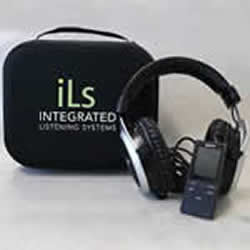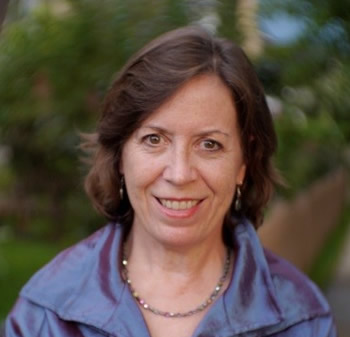The Prenatal and Perinatal History: A Vital Component of Effective Holistic Practice
For the past 25 years, I have educated professionals in prenatal and perinatal psychology. I have found that the potential connection between their clients’ current therapeutic issues and their prenatal and perinatal experience is often a rather mysterious terrain for most practitioners. More practitioners now recognize that these early experiences are important and have appreciation for “prenatal stress” and “birth trauma” as significant, but fewer feel confident to systematically identify, assess, and work with this developmental period and its long-term repercussions in their practice.
Body Wise: Community Based Centers
I had a dream. I wanted to create a shop-fronted organisation on my local High Street to offer drop-in counselling and psychotherapy services. It wouldn't be a bad location; not the poorest nor the poshest area of town, but with a strong community focus.
Prenatal and Perinatal Psychology: Rediscovering Our Primary Relationship of Self
For over 30 years, the field of Prenatal and Perinatal Psychology (PPN) has taken the dynamic understanding of human development deeper by studying how babies’ earliest experiences in the womb, during birth and bonding, and as newborns shape and set in motion fundamental life patterns. These core patterns may be life-enhancing or life-diminishing.
The findings from PPN revolutionize our notions of who babies are, who we are, what is going on during this primary period of human development, and how these very early experiences form babies’ core foundations at every level–physical, emotional, mental, relational and spiritual. PPN offers a unique lens of exploring this developmental period from the baby’s point of view.
A Flood of Blessings
A month ago, a pipe burst in an upstairs wall in my home. Fortunately, the small space where SPT is created was spared while the rest of my home was inundated with water and the resultant outcomes (ceiling collapse, walls torn out, flooring removed, personal property damaged, destroyed). That experience, combined with the now four weeks of frustration due to frigid temperatures (think 45 mph winds gusting through open walls; even my cement Buddha scrunched its shoulders up tighter to ward off the freeze) and frozen communications with the company hired to do the mitigation and restoration work, resulted in intense feelings of powerlessness (a familiar feeling from long ago).
Yes It’s Your Parents Fault
Experts in the fields of psychology, neuroscience, sociology and education say that attachment theory’s underlying assumption — that the quality of our early attachments profoundly influences how we behave as adults — has special resonance in an era when people seem more attached to their smartphones than to one another.
Babies Mental Health Matters
When we hear about a person’s mental health, it’s often in the context of a problem — a colleague is struggling to handle stress at work, a friend’s child is having behavioral problems at school, or a family member has received a diagnosis. And almost always, these discussions are limited to older children and adults. So it begs the questions: when does mental health begin? Do babies have mental health?
Short Stories from the Biodynamic Psychotherapy Room: Lily
Biodynamic massage is an integral part of biodynamic psychotherapy, which allows psychotherapeutic work within the framework of the body. The name ‘biodynamic massage’ encompasses fourteen different methods of touch. Almost all the touch methods can be performed at different levels of the body.
A biodynamic psychotherapist is often guided by a stethoscope (either electronic or ordinary) stethscoprewhilst carrying out biodynamic massage (Southwell, unpublished; Stauffer, 2005, unpublished, 2010; van Heel, 2014); the stethoscope is utilized for listening to the digestive system’s sounds (also known in this context as the psycho-peristalsis) (Boyesen, M-L. & Boyesen, G. 1978). This makes it possible to obtain immediate feedback from the body about the level of accuracy, quality, and attunement of the touch applied. The experience of touch must be modulated by context and internal state (Ellingsen et al., 2016).
Short Stories from the Biodynamic Psychotherapy Room: Salutogenesis and the Web of Dynamic Phenomena
Learning biodynamic massage means learning to sense and direct non-verbal processes in a partially conscious manner, to transform some of the subcortical processes of the dance into partially conscious processes.
Embodying Embryology: Accessing Our Original Potential
My first inkling of early trauma emerged while receiving bodywork. While previous therapy was helpful, touching early prenatal and birth traumas hidden beyond my conscious awareness required including my body in therapy. Massage leading to emotional release began the process. This was followed by dance/movement psychotherapy where I learned to notice and express what was held in my tissues. I was fascinated by memories of feeling unwelcomed and unwanted, losing a twin, being plucked out of the womb with forceps from a mother too drugged to remember if she had held me after birth, or to realize the wrong baby was brought to her three days later.
The Handbook of Body Psychotherapy and Somatic Psychology: A Day Long Celebration
Nancy Eichhorn offers her experience listening to six speakers’ viewpoints at the day long celebration honoring The Handbook of Body Psychotherapy and Somatic Psychology in a four-part blog posting with some longer writings and some short eclipses of the content shared. As well, she hopes to reflect their collective themes that resonated with William Cornell’s call for institutions to train ‘embodied’ psychotherapists rather than body psychotherapists—a play on the aliveness of the adjective rather than the solid structural nature of a noun.












